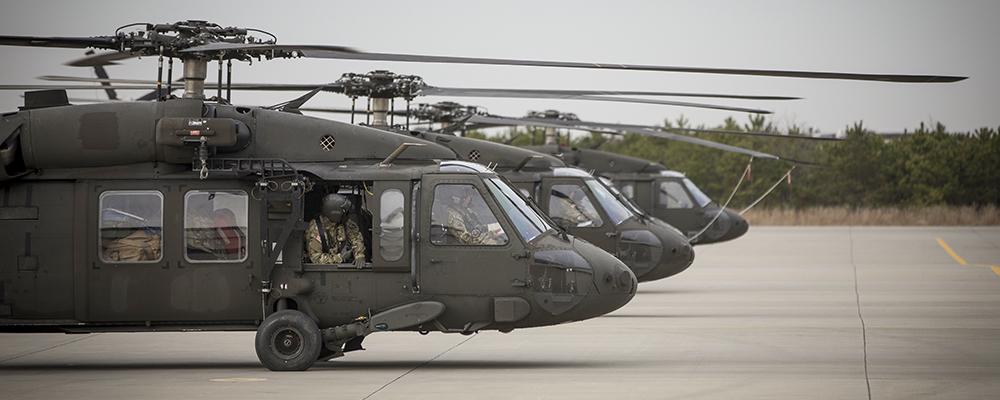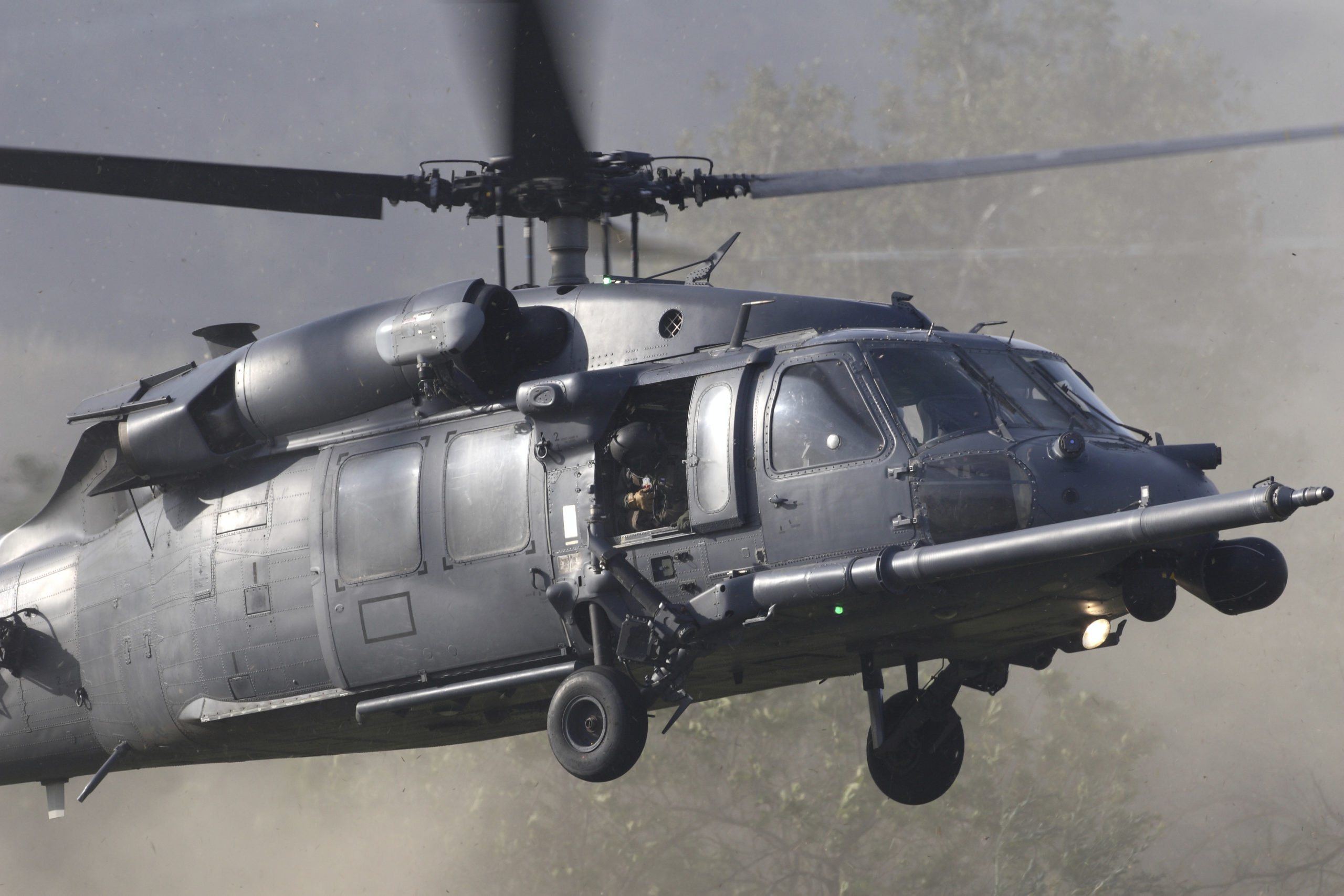Discovering the Background and Development of the UH 60 Helicopter

Origins of the UH-60
The origins of the UH-60 helicopter can be traced back to the late 1960s, a duration noted by the requirement for a functional energy aircraft that could adjust to the evolving needs of modern warfare. The united state Army recognized the requirement for a replacement for the older UH-1 Iroquois, which was ending up being significantly poor for the intricacies of modern combat scenarios. In 1967, the Army initiated the Utility Tactical Transport Aircraft System (UTTAS) program, which sought to develop a multi-role helicopter efficient in different goals, consisting of army transportation, clinical discharge, and logistical assistance.
The style competition attracted a number of aerospace manufacturers, but it was Sikorsky Airplane Firm that eventually protected the contract in 1972. The UH-60 Black Hawk was introduced, showcasing cutting-edge design elements and progressed modern technology that set it in addition to its precursors. Its initial flight occurred in 1974, and the airplane was formally embraced by the Army in 1979. The UH-60 quickly got recognition for its robust performance, dependability, and adaptability, paving the way for its extensive usage in armed forces operations and strengthening its condition as a cornerstone of united state Military air travel.
Trick Style Features
Cutting-edge design functions of the UH-60 Black Hawk considerably add to its operational efficiency. Among the most notable facets is its twin-engine setup, which boosts reliability and supplies a higher power-to-weight proportion, enabling the helicopter to carry out under different problems. The aircraft's four-blade primary blades system supplies improved lift and ability to move, vital for tactical goals.

Furthermore, the cockpit is made for optimal exposure and functional designs, including sophisticated avionics that streamline pilot operations. The modular style of the UH-60 enables for very easy maintenance and flexibility, making it ideal for numerous mission accounts, from army transport to medevac operations. These essential layout features make sure that the UH-60 Black Hawk remains a versatile and reputable property in army air travel, efficient in meeting the needs of modern-day warfare.
Technical Developments
Current technical developments in the UH-60 Black Hawk have actually significantly improved its functional capacities and versatility. The combination of innovative avionics, such as electronic flight control systems and enhanced situational understanding display screens, permits pilots to run with boosted precision and performance. These systems facilitate enhanced navigation, interaction, and data sharing, allowing the helicopter to work effectively in diverse atmospheres.
In addition, the intro of composite products has actually lowered the total weight of the aircraft while preserving architectural honesty. This reduction improves gas effectiveness and prolongs operational range. The consolidation of sophisticated rotor innovation, including making use of four-blade, totally expressed blades systems, has actually boosted lift performance and maneuverability, permitting far better handling in numerous trip problems.

In addition, advancements in propulsion systems, such as the T700-GE-701D engines, have actually raised power result and reliability - uh 60. These engines add to premium efficiency in hot-weather and high-altitude problems
Last but not least, the combination of self-defense systems and enhanced sensor plans boosts the Black Hawk's survivability and goal efficiency. Collectively, these technical renovations make certain that the UH-60 Black Hawk continues to be a crucial asset in modern-day aeronautics, with the ability of adapting to the evolving needs of altruistic and army objectives.
Role in Military Operations
As the foundation of U.S. Military air travel, the UH-60 helicopter plays a vital function in numerous armed forces procedures, offering as a versatile system for fight assistance, transport, and medevac objectives - uh 60. Its style includes the ability to run in diverse environments, making it important for army movement and logistical assistance in both conventional and unique warfare

In clinical evacuation situations, the UH-60 has actually verified indispensable, considerably decreasing the time to carry injured soldiers from the battlefield to clinical facilities. Its advanced avionics and night vision capacities additionally guarantee mission success under tough conditions. Overall, the UH-60 helicopter continues to be a crucial asset, continuously adapting to fulfill the developing needs of armed forces operations and improving the effectiveness of U.S. pressures worldwide.
Future of the UH-60
Looking ahead, the future of the UH-60 helicopter includes significant innovations in innovation and capacities developed to improve its functional efficiency. As army operations advance, the UH-60 is anticipated to incorporate sophisticated innovations, this post consisting of improved avionics, enhanced tools systems, and advanced communication devices. These improvements will certainly allow for better situational awareness and objective flexibility, making sure that the UH-60 continues to be an important asset on the combat zone.
One notable growth is the combination of fly-by-wire systems, which will certainly boost flight control precision and decrease pilot work. Efforts to update the airframe and engines intend to raise haul, array, and rate ability, thereby expanding the helicopter's functional extent.
The future additionally holds assurance for increased interoperability with unmanned airborne systems (UAS), enabling collaborated objectives that take advantage of both manned and unmanned abilities. Furthermore, the unification of synthetic intelligence and artificial intelligence could maximize trip characteristics and maintenance processes, leading to minimized functional learn the facts here now expenses.
Final Thought
The UH-60 Black Hawk helicopter represents a considerable success in military aeronautics, advancing from the united state Army's initial demands for a flexible utility aircraft. Its innovative style functions and continuous technical advancements have actually guaranteed its importance in numerous military procedures over his response the years. As the needs of modern-day warfare adjustment, the future of the UH-60 will likely include further improvements and adaptations, reinforcing its standing as a crucial asset for militaries worldwide.
The UH-60 Black Hawk helicopter represents a substantial turning point in military air travel, emerging from the U.S. Army's quest for a much more versatile and dependable energy aircraft in the late 20th century.The beginnings of the UH-60 helicopter can be traced back to the late 1960s, a duration marked by the demand for a versatile energy aircraft that could adjust to the evolving needs of modern warfare. In general, the UH-60 helicopter remains a crucial asset, constantly adjusting to meet the progressing needs of armed forces procedures and enhancing the efficiency of U.S. forces worldwide.
Looking in advance, the future of the UH-60 helicopter entails significant developments in technology and abilities made to enhance its operational efficiency.The UH-60 Black Hawk helicopter stands for a significant accomplishment in army aeronautics, evolving from the U.S. Military's first requirements for a versatile energy aircraft.
Comments on “How the UH 60 Revolutionized Tactical Air Mobility and Combat Support”